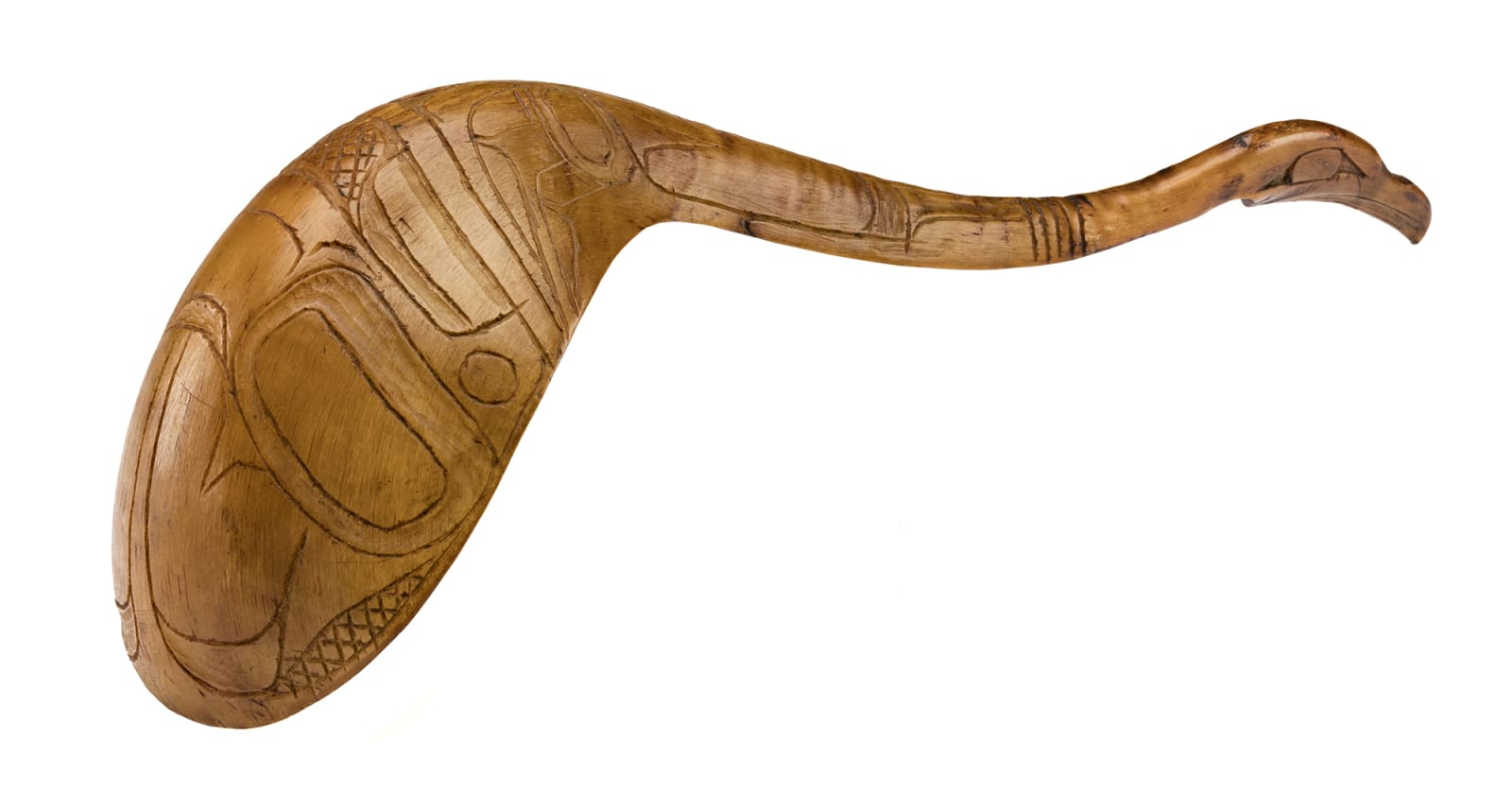UNIDENTIFIED ARTIST, HAIDA OR TLINGIT
unsigned.
LOT 45
ESTIMATE: $3,000 — $5,000
Mountain sheep horns vary a lot in size, the larger horns containing enough volume to be worked into bowls and large ladles capable of serving several people at a feast. Working horn in this way is not a complicated process; the basic tasks are simple, but much easier said than done. The horn is carved to a pre-form, boiled, and opened out to make the bowl 2 3 times wider than the original horn. The upper curl of the horn is carved to shape, and after boiling bent backward opposite to its natural curl. Bound to a wooden form to hold its new shape, the horn cools and dries and will maintain its new form indefinitely.
This example was worked in this way by a master horn carver, who created this graceful and elegant form from the rough, spiral-curled original horn. Its beautifully tapered handle terminates in the simply carved head of a raven. Sheep horn, if not darkened by age, is warmly translucent when carved thinly and evenly.
After the ladle has set in its new form, the exterior can be carved with two-dimensional formline embellishment, as is this example. In this case, it is likely that the horn was originally made as an unembellished practical utensil by an experienced master, probably in the mid-nineteenth century. The exterior carving is in a late nineteenth- century style, and though it contains some classic formline elements, is less masterfully executed than the ladle itself. All told, the ladle is nonetheless a graceful example of the horn-worker’s art.
Steven C. Brown
Literature: For an example of a classic engraved Haida sheep horn ladle c. 1850 see Steven C. Brown, Native Visions: Evolution in Northwest Coast Art from the Eighteenth through the Twentieth Century (Seattle: Seattle Art Museum / Vancouver: Douglas & McIntyre, 1998), p. 76. For a detailed discussion of Tlingit horn spoons and ladles see Anne-Marie Victor-Howe, Feeding the Ancestors (Cambridge: Peabody Museum Press, 2007).
Provenance
An American Collection.Exhibitions
Join our mailing list
* denotes required fields
We will process the personal data you have supplied in accordance with our privacy policy (available on request). You can unsubscribe or change your preferences at any time by clicking the link in our emails.

